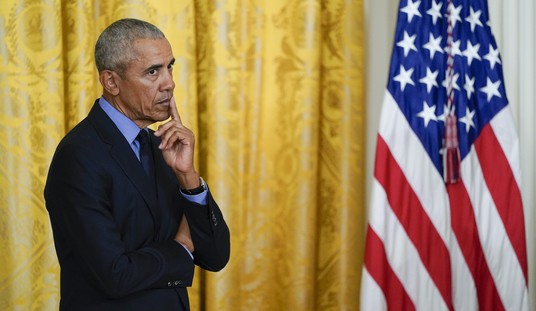If you want proof that President Trump’s economic strategy is working, look no further than what’s happening in the apparel and cotton markets.
Despite media alarmism over tariffs and warnings of an “impending recession,” the data tells a different story — one of targeted disruption that is reshaping global trade to produce freer, fairer markets with fewer barriers and more open competition over the long term.
It’s a strategy rooted not in economic theory but in real-world results — prioritizing American jobs, national security, and long-term industrial resilience. Trump’s critics underestimated the precision of these moves. They expected chaos. They can't believe that they got control instead.
The Trump administration’s newly imposed 145% tariffs on Chinese-made apparel have already triggered a sharp drop in U.S. clothing imports from China, driving them to their lowest level in 22 years. In response, major U.S. retailers are shifting sourcing to more geopolitically aligned nations such as India, Bangladesh, and Vietnam. Vietnam, notably, just finalized a new trade agreement with the administration — further evidence of an emerging “friendshoring” strategy that combines economic leverage with diplomatic outreach.
Trump’s vision is focused on high-value manufacturing: semiconductors, AI hardware, defense systems, and industrial machinery.
As he put it himself, "I'm not looking to make T-shirts, to be honest. I'm not looking to make socks. We can do that very well in other locations. He continued: “We are looking to do chips and computers and lots of other things, and tanks and ships.”
Recommended
That said, that doesn’t mean low-end manufacturing should be surrendered to China, which still refuses to open its markets up to the U.S. Instead, it should be relocated to trading partners that are willing to play on fair terms.
That’s exactly what’s happening, and this trade rebalancing is already having ripple effects in commodity markets, most notably in cotton.
Yes, in retaliation for the new tariffs, China slashed its U.S. cotton imports by 73% this February, according to the USDA. But the blowback hasn’t weakened the American cotton industry. Quite the opposite: countries like Pakistan, Turkey, and Vietnam — all key players in the apparel supply chain — are now stepping up as buyers of American-grown cotton. Major apparel-producing nations, including the ones above, are importing more American cotton than ever.
American cotton producers are finding new, more reliable markets. U.S. apparel brands are diversifying their sourcing to increase supply chain resilience. Consumers are benefiting from the long-term stability that comes from disentangling supply chains from a single, dominant, and often hostile source.
While most American companies have responded to this shift by buying U.S. cotton over Chinese cotton, there are some surprising outliers. For example, the ironically named U.S. Cotton, a subsidiary of Parkdale Mills, continues to import Chinese cotton. Of all companies that should buy American cotton and avoid Chinese cotton, you would expect a company named U.S. Cotton to be it.
Still, the broader market trend is unmistakable: the Chinese share of U.S. apparel sourcing is shrinking, while friendlier nations are picking up the slack — and purchasing more American raw materials in the process.
Critics have long claimed that tariffs are a blunt instrument, bound to backfire or drive up consumer prices. But the feared inflationary spiral hasn’t materialized. Nor has there been the economic collapse that many predicted. Instead, we’re seeing a recalibration of trade relationships — one that puts American producers in a stronger position and chips away at Beijing’s manufacturing dominance without triggering systemic damage to the U.S. economy.
As a result, the New York Times has resorted to producing laughable headlines like, “Recessions Warnings Are Everywhere, Except in the Data.”
The Trump administration’s approach to trade has always been tactical. Tariffs are not the goal — they’re just tools of leverage. The goal is freer and fairer trade, as well as secure supply chains. And by that standard, the results so far speak for themselves.
The era of unilateral concessions and strategic dependency is over. America isn’t just reopening factories and revitalizing industry — it’s also rewriting the rules of trade. Under President Trump, the U.S. isn’t playing by someone else’s terms. We’re setting them.
Michael Busler is a public policy analyst and a professor of finance at Stockton University in Galloway, New Jersey, where he teaches undergraduate and graduate courses in finance and economics. He has written op-ed columns in major newspapers for more than 35 years.
























Join the conversation as a VIP Member